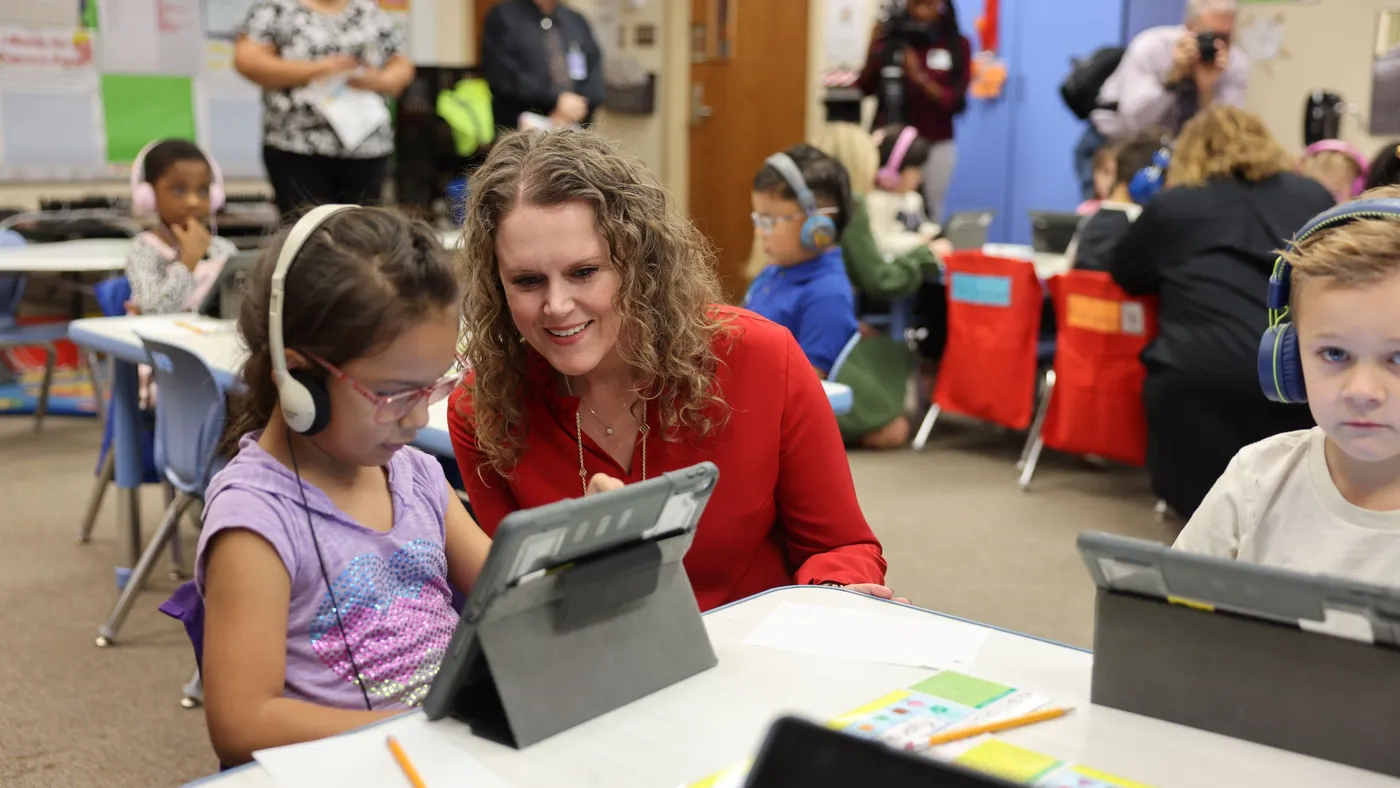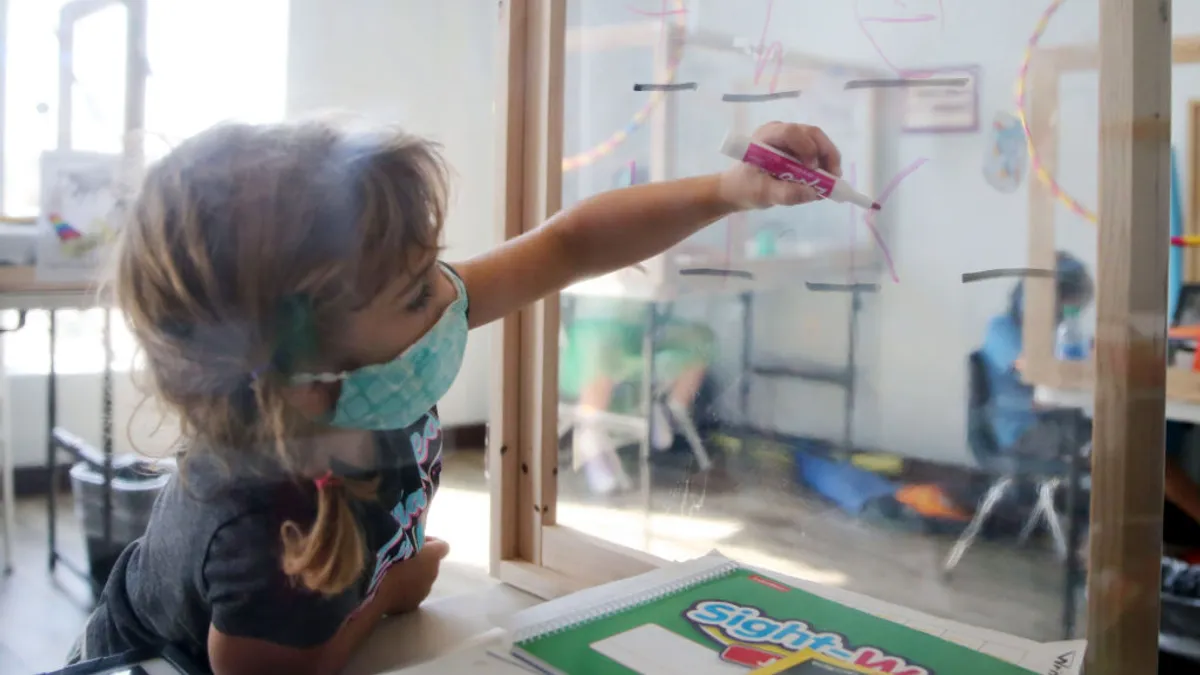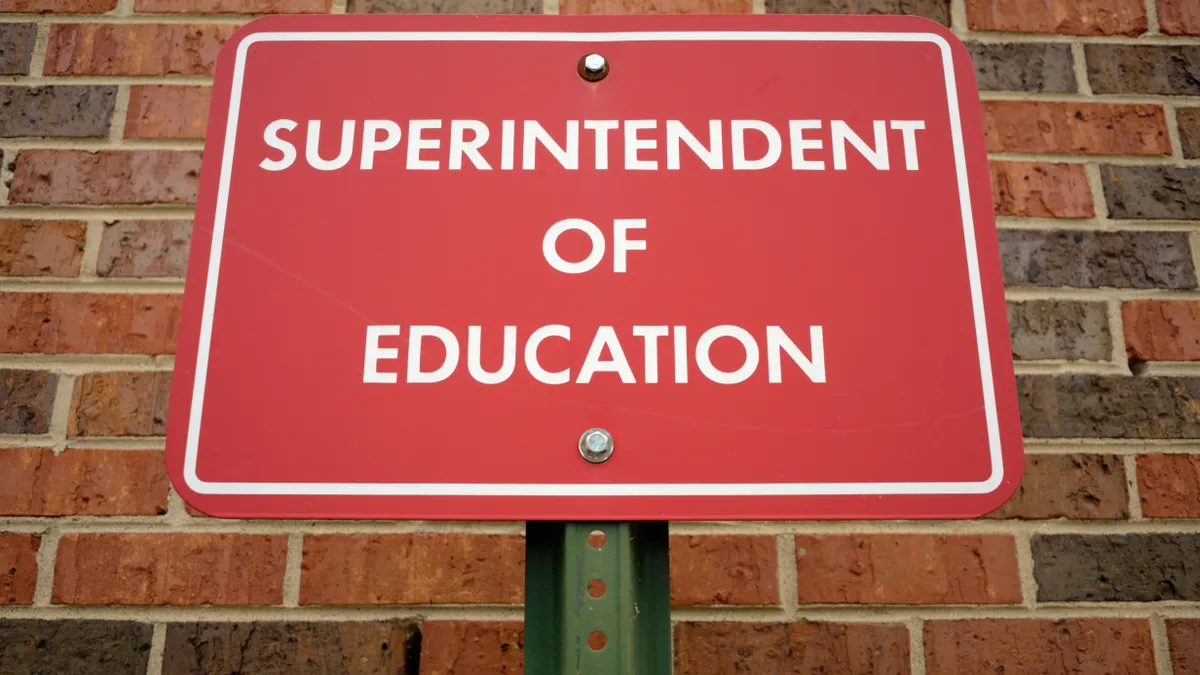Five years ago, Texas’ Ector County Independent School District was significantly underperforming, said Scott Muri, the district’s superintendent emeritus. Today, it's a different story.
When Muri joined as the district’s superintendent in 2019, he said, students were “struggling academically in school,” and “all the metrics were heading in the wrong direction.” That same year, the Texas Education Agency gave Ector County ISD an F accountability rating.
But now, Ector County ISD, with about 34,000 students, is on the upswing. Signs point to significantly improved student achievement, and the district earned its first-ever B rating from TEA in 2022, the most recent year rated.
Per Texas’ College, Career, College, Military Readiness metric, Muri said, the percentage of high school seniors considered prepared for postsecondary success jumped from 56% to 88% between 2019 and 2024.
In that same five-year period, the district’s youngest students also demonstrated noticeable improvement. In 2019, the state deemed 36% of Ector County 5-year-olds to be ready for kindergarten — by 2024, that metric rose to 57%.
Additionally, Muri said, the district’s teacher turnover rate dropped from 18% to 1% in those years.
The district covers 902 square miles in West Texas and enrolls a high percentage of students considered in poverty, 72%. A majority of students — 80% — are Hispanic, while 14% are White and 3% are African American.
Muri points to the district’s five-year strategic plan as a key driver to the ongoing student improvement.
That plan for 2019-2024 focused first on the basic, foundational pieces of student success, such as ensuring school buses ran on time, students were fed, and there were enough teachers in every classroom. The second component honed in on human capital through significant investments in pipeline and compensation programs for both teachers and principals. Then, the final piece prioritized academics, particularly through the district’s personalized, blended learning model that taps into high-dosage online tutoring.
“It isn’t any one thing,” said Muri. “It’s an overall strategy that has helped us get to where we are today.”
Muri, as superintendent from 2019 until his retirement in August 2024, oversaw the plan's rollout. He is assisting in an advisory role through January 2025, with Interim Superintendent Keeley Boyer filling in as the search for a permanent leader continues.

Student achievement
Ector County ISD began to consider bringing high-dosage tutoring to students in summer 2020 during the COVID-19 pandemic, Muri said. “We wanted our kids to have the most effective form of academic recovery, and that is one-on-one tutoring. But we don’t live in a community that could provide thousands of tutors for students.”
That’s why the district piloted a virtual tutoring program in the 2020-21 school year. Middle school students were the first to participate. In spring 2021, the live virtual tutoring program expanded to serve 6,000 students in K-12, he said.
That same spring, Ector County ISD designated $10 million of its $93 million in federal pandemic relief funds to tutoring over the next three years, according to a report by university-based research nonprofits FutureEd and the National Student Support Accelerator.
To ensure the tutoring helps students grow academically, the district implemented outcomes-based contracts, where the tutoring company is compensated based on student improvement. Ultimately, Muri said, the more students grow, the more money the tutoring company makes.
“But obviously, if kids are not growing, there’s no money involved. It’s holding people accountable for academic results,” Muri said.
The virtual tutoring program has spurred significant gains in student achievement, FutureEd and the National Student Support Accelerator found.
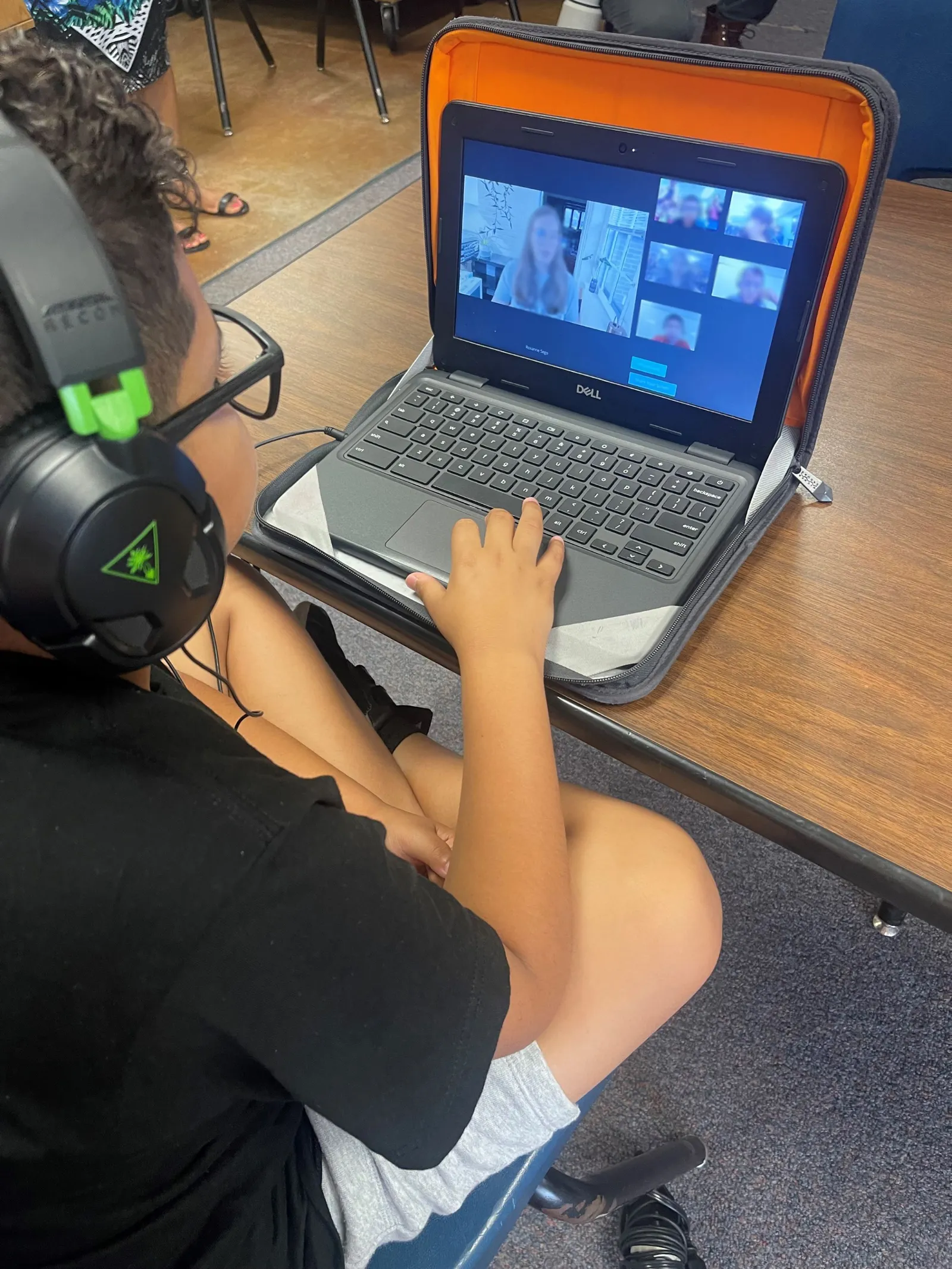
Among students who scored below grade-level on the 2021-22 Texas state assessment and received at least 20 tutoring hours, 50% scored at grade-level or higher the next school year. Additionally, about 30% of students tutored in math reached the 66th percentile or higher on the standardized NWEA MAP assessment after receiving tutoring services for just one year.
Muri noted how common it is for wealthy families to provide tutoring services for their children. But now the district can provide tutoring to students who otherwise would likely never have access to such services.
“We changed their trajectory,” Muri said.
As Christopher Stanley, Ector County ISD’s board president, reflects on the district’s achievements over the past five years, he highlights the impact on the high-poverty community.
“When you hear about a lot of first-generation kids, who never saw themselves in certain lights — whether it’s education or workforce — and then all of a sudden, we’re giving them the opportunity to succeed,” Stanley said. “And then, watch this, they’re succeeding … it’s not talk anymore. It’s not this abstract, pie-in-the-sky thing. It’s hard, actual artifacts of kids leaving high school with incredible jobs.”
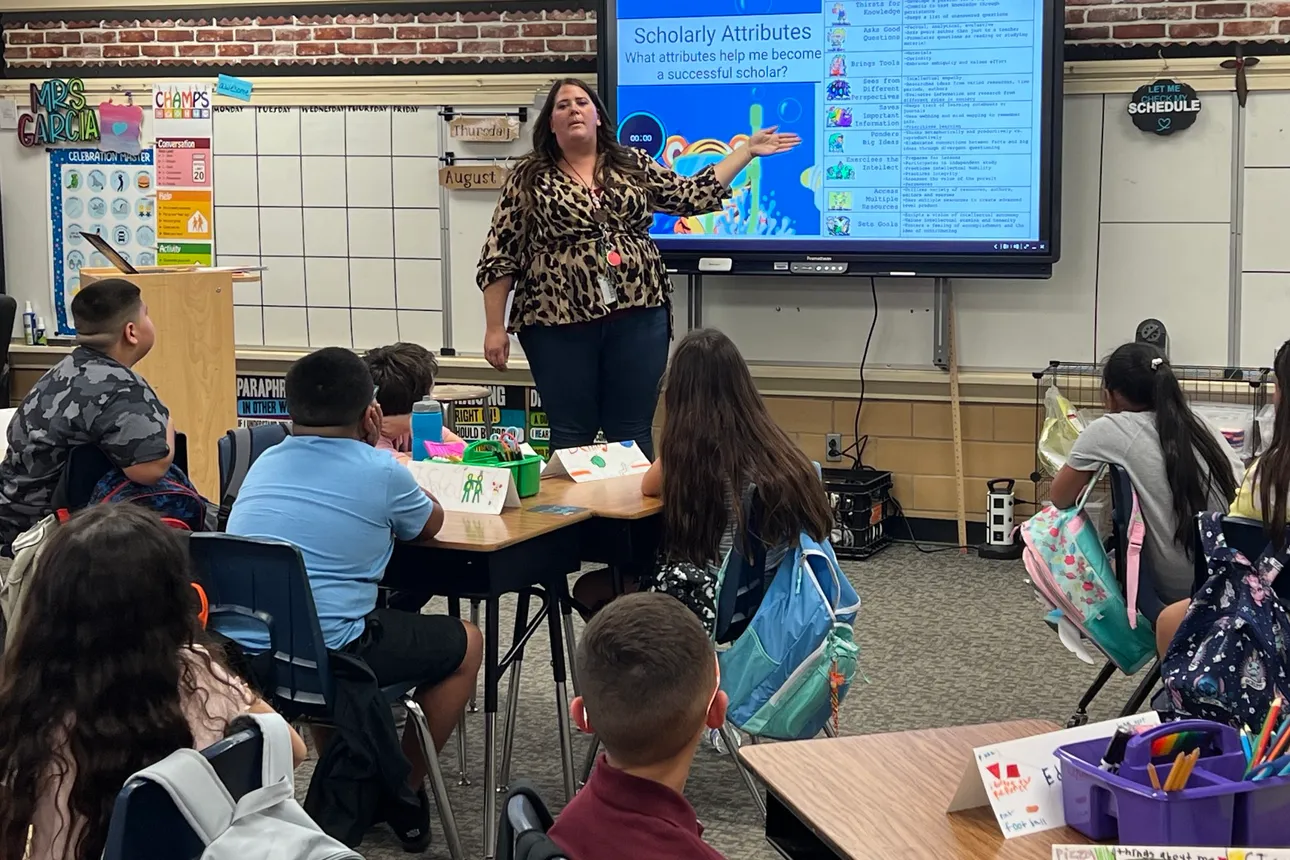
A unique investment in staffing
Tutoring is not the only effective strategy that Muri says has helped shape students’ rising success. Strategic staffing through the district’s Opportunity Culture program has significantly influenced student growth, too, he said.
In this program, the district’s most effective teachers instruct half-time and then coach and mentor other educators the rest of the day. Ector County ISD’s program launched over four years ago in partnership with Public Impact, a staffing organization based in North Carolina, Muri said.
Additionally, under the Opportunity Culture model, 44 of the district’s roughly 1,700 teachers earned over $100,000 each in annual salaries in the 2023-24 school year, said Boyer, the interim superintendent and the district’s former chief of schools. This compensation strategy, which recognizes teachers based on their students’ performance, is in part funded by the state, district leaders said.
Dana Batten, one of the multi-classroom leaders at Ector County ISD making six figures, has participated in Opportunity Culture since it began. Besides teaching 6th grade reading part time, Batten coaches fellow teachers by observing their classes and meeting with them one-on-one.
Teachers don’t go into the profession for the money, said Batten, who has taught for 13 years. But programs like Opportunity Culture mean she can earn a comfortable living, she said.
“I love what I do, but to know that I’m valued as an educator and my district honors that … it just speaks a lot,” Batten said.
The program also helps retain teachers, and the data shows it — teacher vacancies have dropped from 350 to 29 in the past five years, according to Muri.
The district has also invested in an incentive allotment program for principals that launched this school year, Boyer said. Under that program, the top 15% of principals have the opportunity to earn over $200,000 annually. On the pipeline side, Ector County ISD became the first school district in the nation to use the U.S. Department of Labor’s model for launching a registered apprenticeship program for principals.
“The teacher is the No. 1 factor influencing student achievement and the principal is second,” Boyer said. “So us really focusing on the development of both teachers and school leaders, I believe, absolutely has impacted student achievement and student learning.”
Even as the district faces budgeting challenges, Boyer and Muri said Ector County ISD will continue to prioritize funding for its investments in staffing and student learning.
Muri said the district will rely on a “strategic abandonment tool,” which will help leaders decide which programs to hold onto or to eliminate based on their effectiveness. The district also plans to continue advocating for more state investment in public education in addition to seeking outside funding through community partnerships.
“We will ensure that we have the funding to make sure that kids are getting the best leaders and the best teachers,” Boyer said. “And, so, if there are other things that we have to look at that don't have as much impact, then that's what we have to do.”


